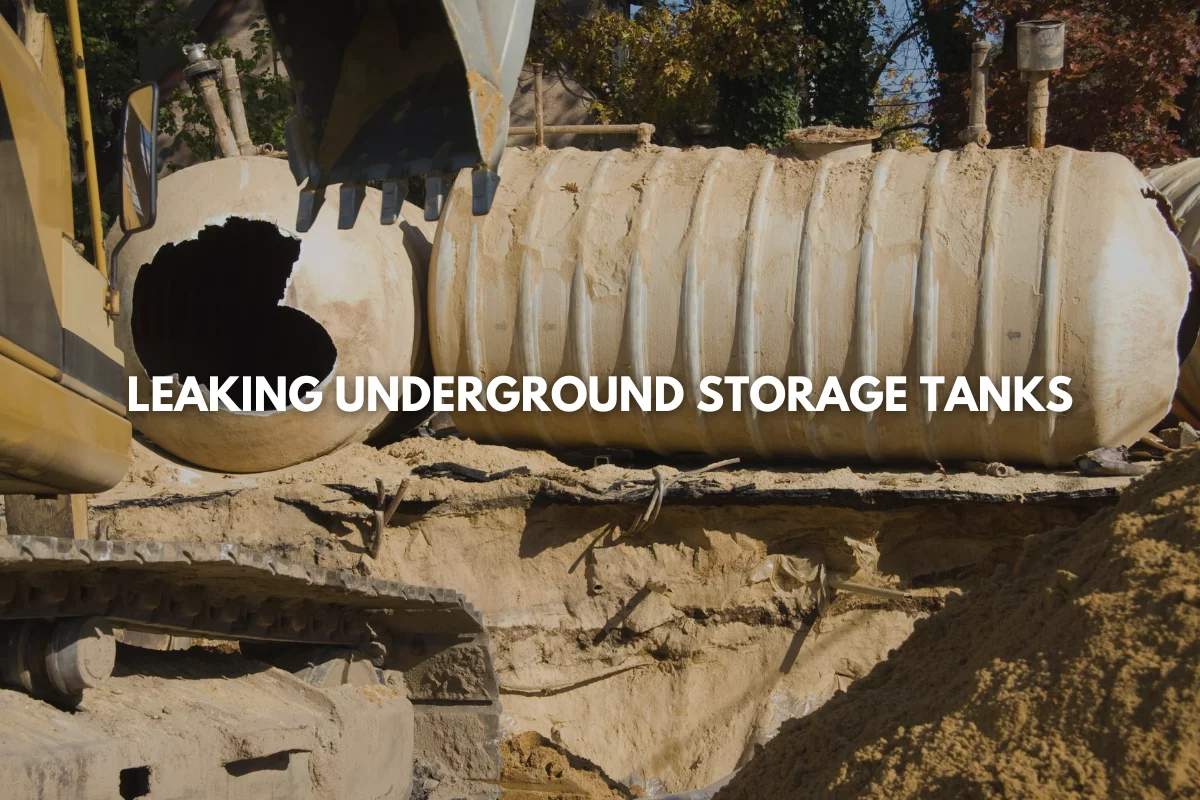Discovering a leaking underground storage tank (UST) is a serious situation that demands immediate attention. These types of tanks are typically found at commercial or industrial sites and can pose significant environmental and legal risks. If you encounter a leak, it’s essential to act quickly and follow the correct procedures to mitigate the damage. Here’s a comprehensive guide on what you need to do.
Why Leaking Underground Storage Tanks Are a Major Concern
Underground tanks storing petroleum are crucial for many industries but can be problematic if they start leaking. The primary concerns include:
- Environmental Damage: Leaks can lead to soil and groundwater contamination, affecting local ecosystems and potentially impacting drinking water supplies.
- Health Risks: Exposure to petroleum products or gas can pose health risks to people, including respiratory issues and skin irritation.
- Legal and Financial Repercussions: There are strict regulations governing these tanks. Failure to address a leak properly can result in hefty fines and legal liabilities.
For instance, imagine you’re managing a fueling station and notice a strange odor near one of your tanks. Ignoring it could lead to significant environmental damage and costly cleanups. Understanding the urgency of the situation helps you take swift action.
Identifying a Leaking Underground Tank
Signs of a Leak
Spotting the signs of a leak early can prevent further issues. Here’s what to look for:
- Chemical Odors: A strong, unpleasant smell of gasoline or petroleum near the tank or in nearby areas can indicate a leak.
- Discolored Soil or Water: Stained soil or groundwater can be a sign that contaminants are leaking from the tank.
- Environmental Changes: Dead vegetation or abnormal changes in soil conditions around the tank may also signal a leak.
For example, a commercial warehouse once noticed an unusual smell in their parking lot. After investigating, they discovered a leaking tank, which had caused soil contamination. Quick detection allowed them to address the issue before it spread.
Detection Methods
If you suspect a leak, confirm it with professional methods:
- Soil and Groundwater Testing: Professionals can perform detailed testing to determine if contaminants have spread.
- Tank Testing: Specialized equipment can check for leaks directly from the tank.
Understanding Your Legal Obligations
Regulatory Requirements
Leaking petroleum storage tanks are regulated under federal and state laws. In Texas, the Texas Commission on Environmental Quality (TCEQ) oversees these regulations. Key points include:
- Mandatory Reporting: Leaks must be reported to authorities within a specific timeframe, typically 24 hours.
- Corrective Actions: Regulations require that immediate corrective actions are taken to manage the leak and prevent further contamination.
Potential Penalties
Failing to report or manage a leak properly can result in severe consequences, including:
- Fines: Significant monetary penalties for non-compliance.
- Legal Action: Possible legal proceedings if the leak causes extensive environmental damage.
Immediate Actions to Take
1. Secure the Area
First, take steps to ensure safety and prevent further contamination:
- Restrict Access: Keep unauthorized personnel and vehicles away from the affected area.
- Prevent Spread: Avoid activities that might exacerbate the leak, such as excavation or heavy machinery use near the site.
2. Contact a Professional Environmental Consultant
Engage a specialized environmental consulting firm to handle the situation. A professional will:
- Assess the Situation: Conduct a thorough assessment of the leak.
- Manage Remediation: Develop and implement a remediation plan to address the contamination.
While it might be tempting to handle it on your own, a firm like CRG Texas can provide the expertise and equipment needed to manage the issue effectively and ensure compliance with regulations.
3. Document the Incident
Keep detailed records of the leak and all related activities:
- Photographs: Take pictures of the affected area and any visible damage.
- Reports: Maintain copies of all reports and communications with authorities and consultants.
The Assessment and Remediation Process
Site Assessment
A professional assessment involves:
- Soil Sampling: Collecting and analyzing soil samples to determine the extent of contamination.
- Groundwater Testing: Checking groundwater for pollutants that may have spread from the tank.
Remediation Strategies
The remediation process may include:
- Soil Excavation: Removing and replacing contaminated soil.
- Groundwater Treatment: Implementing techniques to clean contaminated groundwater.
- Containment: Using barriers or treatment systems to control the spread of contaminants.
Preventing Future Leaks
Regular Inspections
Ensure regular inspections and maintenance of your USTs to catch potential issues early. This includes:
- Routine Checks: Regularly inspect tanks and associated systems for signs of wear or potential failure.
- Compliance Reviews: Ensure that all inspections and maintenance are documented and comply with regulations.
Upgrading Infrastructure
Consider upgrading older tanks and systems to newer, more reliable models. Modern tanks often have enhanced safety features to prevent leaks.
Conclusion: Act Promptly and Seek Professional Help
Discovering a leaking underground storage tank requires immediate action to prevent further damage and legal complications. By following the steps outlined and seeking professional assistance, you can manage the situation effectively and ensure compliance with environmental regulations. Remember, while it’s essential to act quickly, working with experts like CRG Texas can help you go through all of the complexities of remediation and protect your property and the environment.
If you find yourself facing this issue, don’t hesitate to reach out to us. Our expertise will be invaluable in handling the situation and mitigating potential risks.

